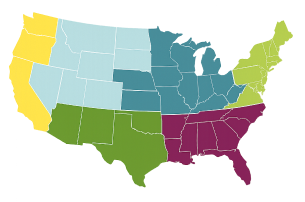Ornamental Grasses – Graceful Texture, Breezy Movement & Year-Round Beauty
Ornamental grass plants are nature’s choreographers—catching every breeze and setting your garden in motion. These perennial performers sway with the seasons, offering soft texture, shimmering seed heads, and architectural elegance that lasts from spring green-up to winter frost. Whether you're designing a dreamy meadow, dressing up your borders, or crafting a carefree container garden, decorative grasses add structure, movement, and a touch of wild wonder.
Why Plant Perennial Ornamental Grasses?
Perennial grasses are the garden’s quiet overachievers—drought-tolerant once established, resistant to deer and pests, and effortlessly beautiful all year long. Their clumping forms create natural structure and rhythm, offering a soothing counterpoint to colorful blooms. They support pollinators and beneficial insects, and their deep roots make them champions of erosion control and slope stabilization. For the gardener who dreams of lush, low-maintenance beauty, tall ornamental grasses deliver with style and substance.
American Meadows Favorites
We’ve curated a collection of ornamental grasses for sale that combine beauty, resilience, and versatility. Feather Reed Grass ‘Karl Foerster’ is the perfect tall grass plant, with golden plumes that glow from midsummer through winter—perfect for adding vertical elegance to borders and beds. Fountain Grass ‘Hameln' is compact and charming, with tidy mounds of arching foliage and soft bottlebrush blooms that are ideal for containers and small gardens. For a dash of color and drama, Fountain Grass ‘Karley Rose’ steals the show with its early-blooming, rosy-pink plumes. And if you’re ready to turn a patch of your yard into a windswept work of art, our Carefree Ornamental Grass Pre-Planned Garden makes it simple —just plant and enjoy a harmonious blend of decorative grass plants chosen for nonstop seasonal interest.
How and Where to Plant
Plant your ornamental grasses in full sun and well-drained soil, and they’ll reward you for years to come. Spring and early fall are the best times to plant, giving roots time to settle in before the extremes of summer or winter. Space each grass according to its mature size—usually between one and three feet apart—to give them room to sway and shine. These adaptable plants are stunning in borders, naturalized meadows, containers, and on slopes, but they’ll protest in soggy spots, so steer clear of poorly drained areas.
Caring for Your Grasses
Once planted, ornamental grasses are the definition of easygoing. Water regularly in their first season, then let nature take the lead—most grasses prefer a little neglect over pampering. Fertilizer is rarely needed, and too much nitrogen can actually diminish their charm. In late winter or early spring, cut back the previous year’s growth to make room for new shoots. Leave seed heads standing through the colder months—they not only provide visual interest, but also shelter and food for birds. Every few years, divide larger clumps in early spring to keep them healthy, happy, and ready to wow.
Ornamental Grass Planting Guides
How To Grow Ornamental Grass
How To Choose Ornamental Grasses
All About Ornamental Grass
